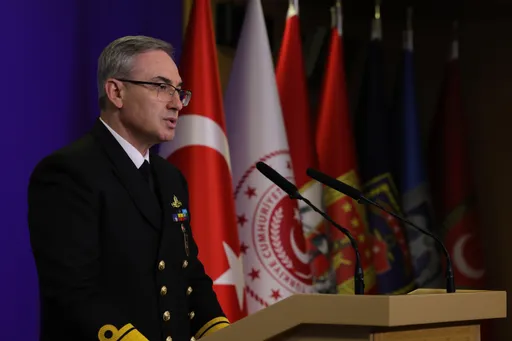Artificial intelligence was once a dreamy possibility painted in uncertainty, but with the release of ChatGPT, society is now forced to acknowledge their relationship with a not-so-human companion ready to enter their lives - and their children’s.
According to the Walton Family Foundation’s educational survey of ChatGPT use in schools, teachers are using the banned tech more than their students. Compared to the 40 percent of teachers who use ChatGPT on a weekly basis, students reporting similar habits only amounted to 22 percent. These findings demonstrate why ChatGPT should be integrated into schools worldwide to further the power of education, give students a more personalised approach to learning, and help teachers innovate.
During February 2023, two groups were interviewed online in the US: 1,002 teachers and 1,000 students aged 12 to 17. They were asked about their usage of ChatGPT, a popular chatbot that gets more than 13 million daily visitors.
Although some teachers are using it weekly and 53 percent anticipate their use increasing as the year progresses, school districts haven’t approved that behaviour yet. In Australia, swift action to impose a blanket ban has left only two states from completely banning the tech nationwide: New South Wales, Queensland, and Tasmanian public schools have all banned ChatGPT. Los Angeles, New York City, Seattle, and more in the US are working to do the same because of its humanlike responses that are hard to detect.
According to teachers though, prohibiting use isn’t even necessary: Only 10 percent of teachers claimed they’ve caught students using ChatGPT without their permission versus the 38 percent that encourage pupils to utilise it. School board officials are overreacting with their negative mindset to technology in the classroom: Teachers (72 percent) and students (63 percent) feel that “ChatGPT is just another example of why we can’t keep doing things the old way for schools in the modern world.”
South Australian schools and universities are showing their support for this unpopular opinion by prioritising responsible use lessons. Education chief Martin Westwell vouches that firewalls and plagiarism detection software are enough to prevent negative consequences.
Education is a powerful tool that can transform the trajectory of someone’s life, so why are we purposely sabotaging its outcomes? Education should be uplifted by AI tools like ChatGPT that can revolutionise archaic foundations. Introducing AI into classrooms would bring more resources, improve accessibility, enhance student engagement, increase efficiency, and strengthen student outcomes.
A wealth of knowledge would be at students’ fingertips: online libraries, databases, and more would be easily obtainable. Acceptance of AI in the classroom would also give children with disabilities or language barriers tangible solutions like language translation and voice recognition.
With ChatGPT, students would be exposed to models they can recreate and improve upon. This tactic is something I already use in my tutoring business when teaching essay writing. Templates allow students to copy structures until they’ve mastered them enough to learn more advanced techniques.
Most importantly too, ChatGPT would revitalise an ageing curriculum and spark creativity in students who used to hate learning. School would become less monotonous when new ways to learn old concepts are being explored. Overreliance on technology wouldn’t be a feasible argument any longer as computers and AI are stimulating students to use their creativity and think critically.
ChatGPT and AI must be recognised as already existing and be utilised to help students discover new ways to learn. For example, text produced by ChatGPT could simply be regarded as another text to compare and contrast against.
Personalised feedback is another aspect that would add to the mental and emotional benefits of AI in the classroom: a teacher’s responsibility to give individualised feedback wouldn’t be such a burden anymore. Machines could initially do the leg work and ease the workload by communicating what each student needs, while at the same time allowing teachers more time to focus on giving students individualised feedback. Teachers who use ChatGPT and AI would complete routine tasks such as grading and lesson planning more efficiently.
A great partnership could result in the creation of a unique tool for the next generation.
Naysayers might mention privacy concerns and possible bias from data sets, but these tools won’t be commonplace in classrooms anytime soon unless specific schools propose initiatives.
In terms of privacy concerns, student data is already in systems vulnerable to cybersecurity breaches. Before criticising ChatGPT use, institutions should clean up their mediocre IT departments first. Even if schools work towards this addition, bureaucracy moves slowly enough that significant improvements will be made in the meantime.
Technology is good in moderation like anything else regardless of whose hands it falls in. What’s important is strengthening measures for understanding what responsible technology use is.
Incorporating ChatGPT and other AI tools in the classroom would embrace technology we’ll soon be using as often as a calculator. Correct implementation would give every student a higher quality of education and eradicate inconsistencies that result in unequal opportunities. Teachers would shift from being the crutch holding up a slowly crumbling education system to being more respected and, innovative in their approach. Children around the world would have access to an admirable learning experience that is in line with modern times.
ChatGPT and AI tools would give us a reliable framework that doesn’t need days off and can withstand the pressure of upholding a nation's most vulnerable population.























